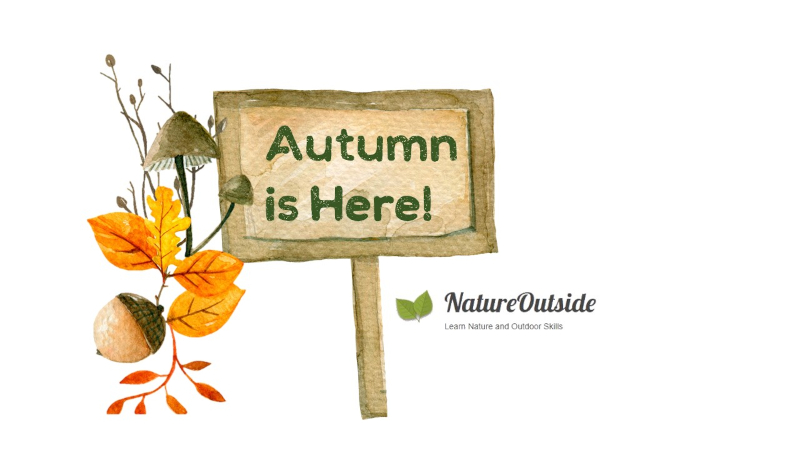
I seek comfort in the woods after a long workweek.
Strolling through the forest in the early morning light, just two hours after sunrise, I wonder at the temperate air that seems to embrace me in a warm hug. It’s the end of September and the weather is unseasonably warm. It reminds me of a climate change joke I heard on the radio, “Summers are warmer and we get to enjoy them all year round!”
But it’s not the air temperature that makes the woods so welcoming. There’s a quality to the sunlight, the smells, and the sounds that make me struggle as if trying to recall the name of an acquaintance I haven’t seen for years.
Until suddenly I realize: Autumn is here!
Smell
I smell decaying leaves.
When leaves fall from the tree their sugars and organic compounds begin to decompose. This creates the classic musky-sweet smell we associate with Autumn. Bark and grass contribute their distinctive notes. It’s an evocative smell. In some people it generates anxiety or sadness. In others excitement.
As I continue my walk, I detect the sweet-oily smell of California Bay Laurel (Umbellularia californica). My hiking shoes crush some bay nuts lying on the forest floor. These are related to avocados. They have a fleshy outer layer that surrounds a shell with a nut inside. The nuts were a traditional food of the Ohlone Peoples that lived in this area for thousands of years. You need to roast the nuts to make them edible, driving out the potent essential oils within. They can be eaten this way or ground to make a coffee or chocolate substitute.
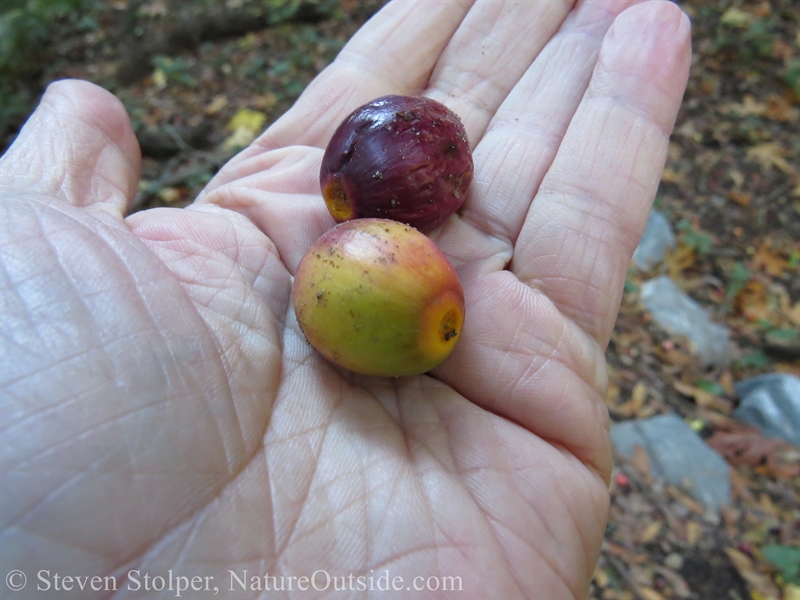
Bay nuts from the Cailifornia Bay Laurel tree.
Sound
At this time in the morning, the forest is silent. The Santa Cruz Mountains’ human residents are still in bed. The stillness gives me a chance to hear the movements of the non-human residents. It’s a chance to eavesdrop on the neighbors.
The squirrels are in a foraging frenzy. I can see three individuals scampering across the forest floor. Autumn is about preparing for winter. And for squirrels that means making sure their energy reserves are high.
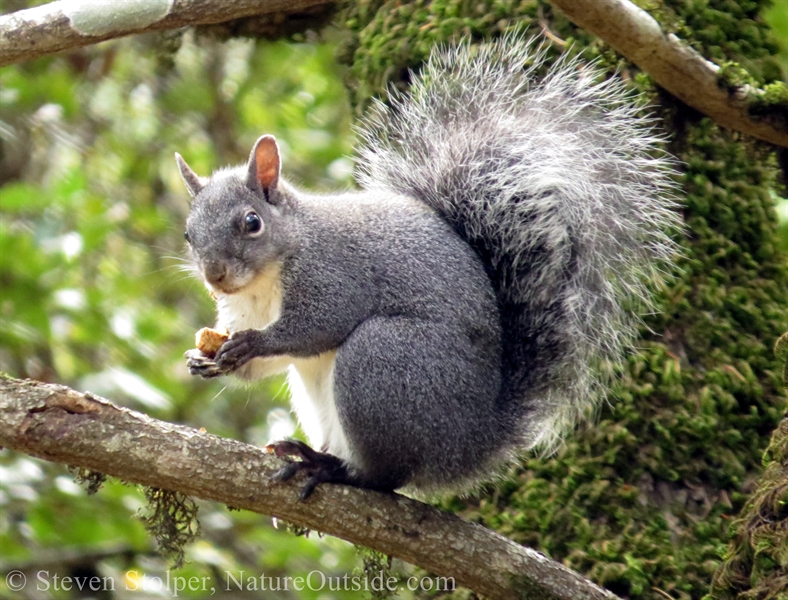
Tree squirrels are foraging to prepare for winter.
Acorn woodpeckers (Melanerpes formicivorus) are busy, too. The oaks and Tanoaks are beginning to produce acorns. Some have even fallen to the ground. But I believe the earliest fall of acorns is mostly wormy and diseased. I use acorns for food, too. And I avoid these early acorns. But the birds are roused and I can see they’re preparing to stock their granary trees.
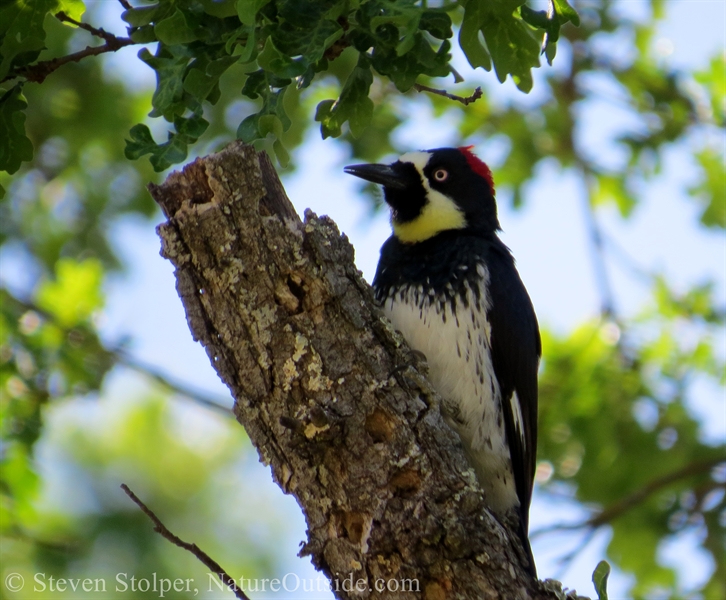
Acorn woodpecker
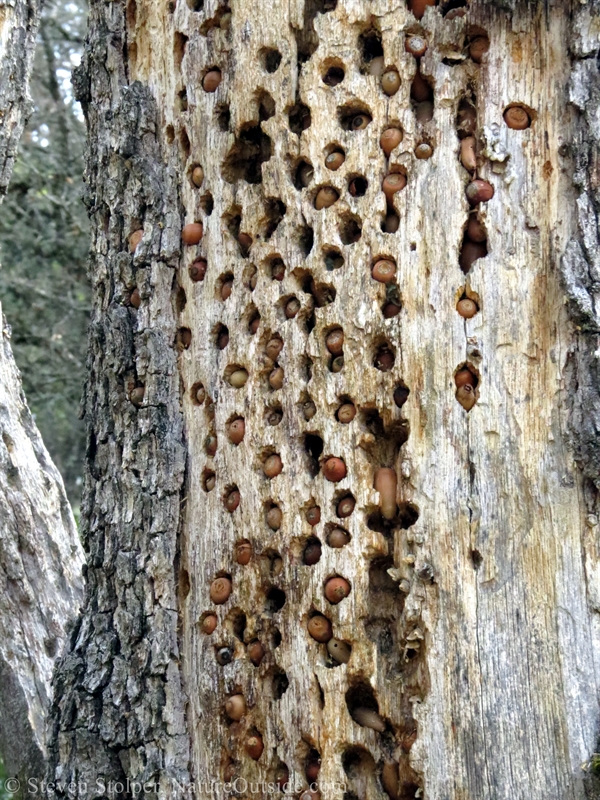
A granary tree.
I also hear large groups of California Quail (Callipepla californica) foraging around me. Their contact calls help them keep in touch with one another while foraging in the dense understory. Occasionaly their “CA” call echoes through the trees. But I don’t hear their famous “CHI-CA-GO” call to assemble the group.
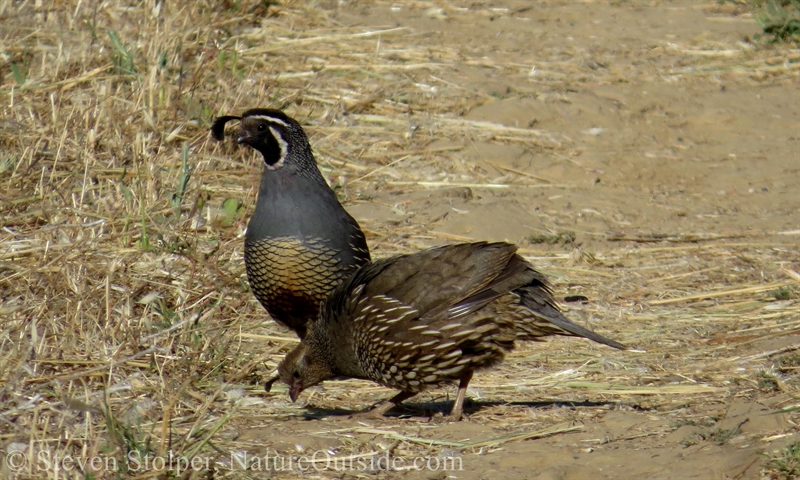
California quail. The male is more colorful and has a large topknot.
You can listen to the contact call I hear as I walk:
Their “Ca” call happens occasionally:
And here is their famous “Chi-ca-go” call:
Sight
My return to the trailhead entails a steep climb. I’m moving slowly as I ascend through the forest. Branches restrict my view. But from my high perch I can see across the valley and lower hills to the coastline and the ocean beyond.
My slow pace has the benefit of being silent. Silent movement is an underrated skill. And I surprise a number of rabbits and squirrels along the path.
I stop for a moment to catch my breath. And as I do I hear the unmistakable sound of crushed leaves. A heavy animal is moving through the forest about 50 feet from me. And it’s moving toward me. I follow the progress of the sound and catch a glimpse of a large Columbian black-tailed deer (Odocoileus hemionus columbianus). It’s a doe. And it’s not alone.
I expect a group of females and am surprised to see the doe is accompanied by a large buck. The buck has impressive antlers. It wouldn’t surprise me if this was the dominant buck in the area. The doe stops, and so does the buck.
My earth-tone clothing helps hide my presence as I remain still. They don’t see me and they aren’t going to. They’ve got other things on their mind.
Unlike Elk, Black-tailed deer in my area do not collect a harem. Although I’ve heard it said that sometimes bucks will collect two or three does. Instead, bucks follow a single female, waiting for her to enter estrous. About two days before a doe comes into estrus, she actively seeks out a buck. The bucks are able to tell by the scent of the doe that she is receptive to mating. The dominant buck runs off any lesser bucks and lays claim to the doe. He will then “tend” her until she comes into estrus. She will only be receptive for 24 hours.
I’ve written before about the life-cycle of deer. This deer activity: chasing, fighting, breeding is a sure sign that Autumn has arrived. And seeing the impressive buck following the doe convinces me without a doubt.
What signs do you see that Autumn has arrived? Let me know in the comments below.
Related Articles on NatureOutside
For fun facts and useful tips, join the free Bushcraft Newsletter.



Leave a Comment